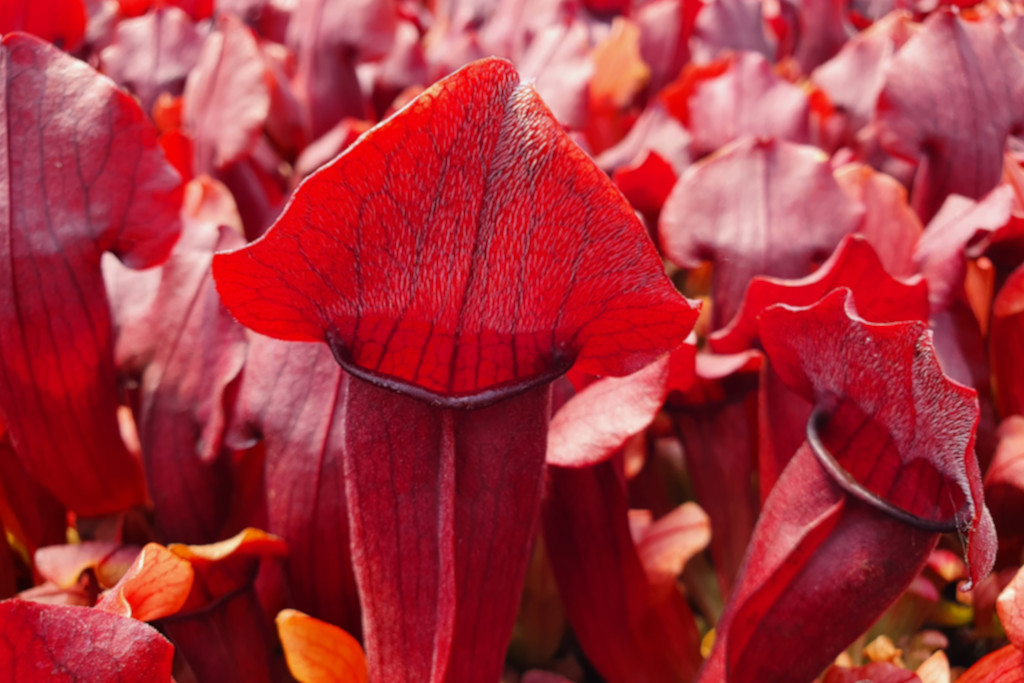The growing season is at its final as soon as it is getting colder outside, the sun is shining less brightly and insects are going back into their burrows. Most carnivorous plants go into hibernation from autumn onwards. This means they no longer create new traps, and the old traps will slowly die off. This is a natural and normal process, so please don’t worry when the traps of your Venus Flytrap start turning black or Trumpet pitcher plant starts to turn brown. This is all part of the plant’s natural cycle. In autumn and winter, there is less sunlight and it will be colder outside. As a result, there are few to no insects to be found and thus no food for carnivorous plants. Some carnivorous plants then go into rigorous hibernation. As soon as the temperature rises in spring, the plants will grow again naturally.
How long does the dormancy period of Carnivorous Plants last?
Hibernation usually starts at the same time as autumn. When the sun is less bright and when it gets colder. This is often around the end of September early October. The dormancy period usually ends when spring begins. When the weather gets warmer and sunnier. This is often around April.
Which Carnivorous Plants will enter dormancy?
Because there is much less sunlight and temperatures drop considerably in autumn and winter, all carnivorous plants will react differently. Species such as Venus Flytrap, Trumpet Pitcher Plant and some Sundew species (such as capensis, aliciae and nidiformis) go into rigorous hibernation. This means that the plant stops creating new traps and the old ones slowly die off. It looks like the plant has died, but this is quite normal. In spring, the plant will produce new traps again. Tropical carnivorous plant species like Nepenthes do not go into a severe winter dormancy. They will produce little to no new traps during the winter period. However, the plant will still look very lively. In winter, Nepenthes (Monkey Cup plant) will no longer produce new cups. Though, the plant’s leaves will remain beautifully green and fresh.
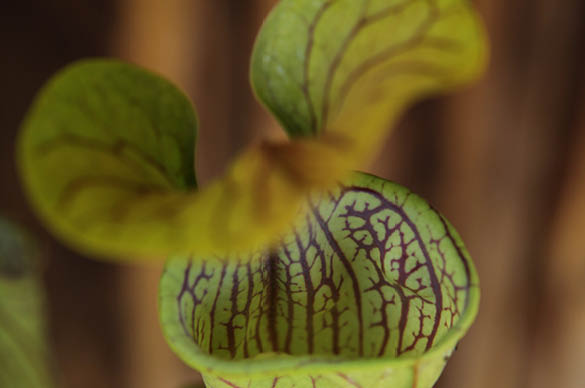
Sarracenia (Trumpet Pitcher)
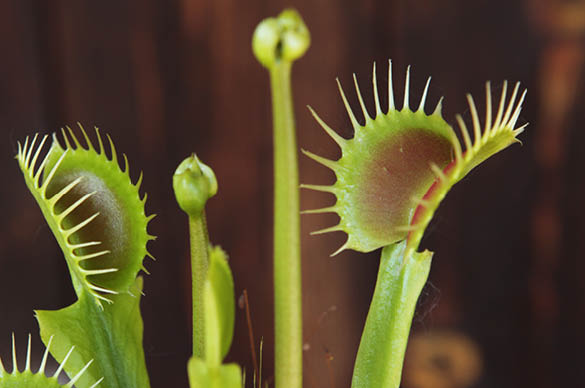
Dionaea muscipula (Venus Flytrap)
Care for Carnivorous Plants during winter dormancy
Care for carnivorous plants during hibernation is quite easy.
The Trumpet Pitcher Plant (Sarracenia) and Venus Flytrap (Dionaea Muscipula):
Both the Trumpet Pitcher plants as the Venus Flytrap plants will enter a strict winter dormancy. It is important to look for their natural condition. If you keep your Trumpet pitcher plant or Venus Flytrap outside, you won’t need to anything in principal. Nature will take care of this itself. However, it is important to make sure the soil is not too dry, for instance when it rains very little.
If you have keep your Trumpet Plant or Venus Flytrap indoors all year, it won’t like to be put outside all at once in autumn. This is because the temperature difference can be too big, preventing the plant from adapting to it’s new climate. If you have one of these species indoors, the following care is best during the winter period: Move the plant to a colder room in the house. For example, in a garage. Make sure the plant is near a window so it can still catch light. The plant may still be left in a layer of water, only a smaller amount than during summer. At the beginning of the dormancy period, you will notice that the traps turn brown/black. You may cut these traps off. On a certain point during the rest period, the plant no longer has any traps and all need to be cut off. Fortunately, this is not serious, but rather quite normal.
Light: A place with light, the plant still needs light in winter.
Water: The plant can still stand with its feet in water.
Feeding: Do not feed the plant during its winter dormancy.
Other: Remove old and dead traps.
The Sundew (Drosera)
Our Droseras are tropical species. There are also hardy Droseras such as the binata or filiformis. In winter, the Drosera will continue to flower. However, the Drosera does not grow hard in winter. You don’t need to move the Drosera to a colder room in winter. The Drosera can stay nicely in front of the window. Again, you may remove the dead stems. This way, you can prevent mould.
Light: A light spot in front of the window.
Water: The plant can still stand with its feet in the water.
Feeding: Do not feed the plant during its winter dormancy.
Other: Remove old and dead traps.
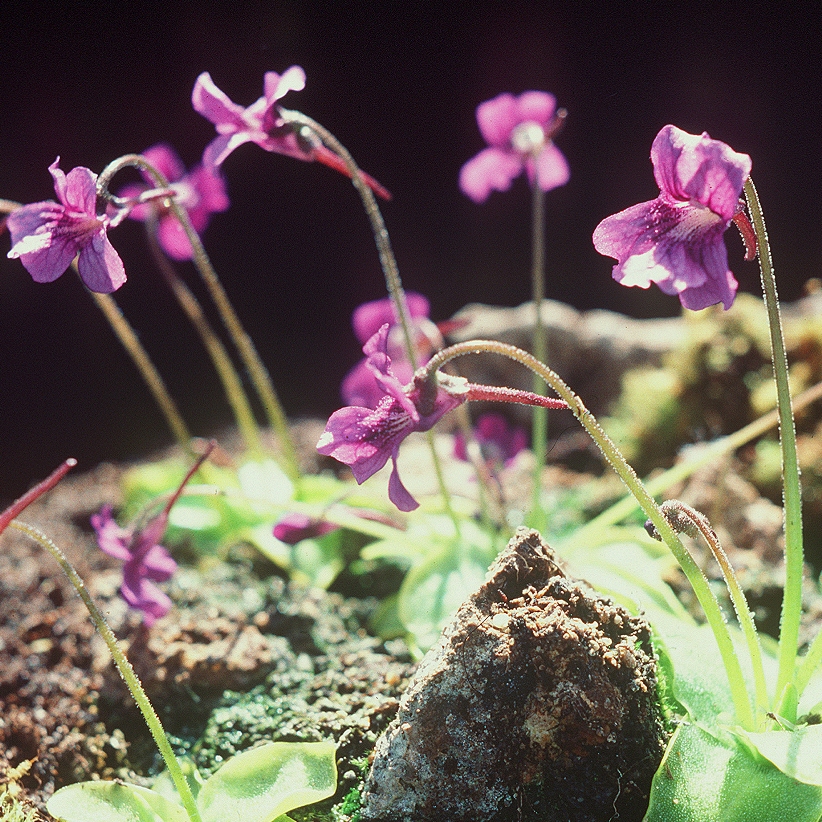
Pinguicula (Butterwort)
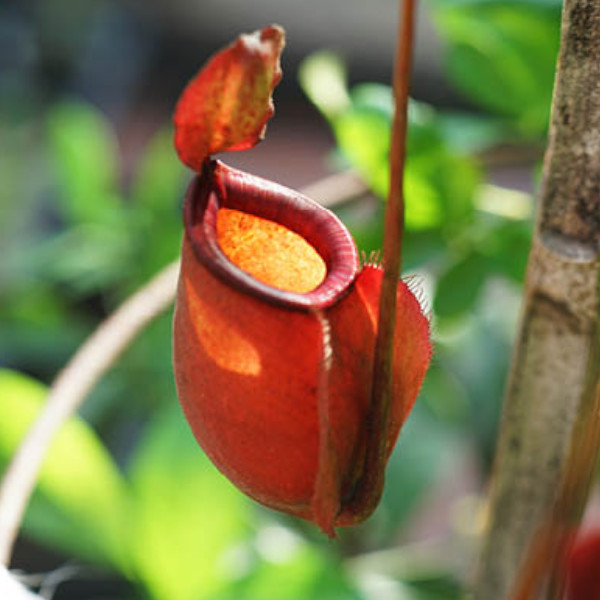
Nepenthes (Monkey Cup)
The Monkey Cup Plant (Nepenthes)
The Monkey Cup Plant is a tropical plant and does not hibernate strictly. The leaves will not die as in the Trumpet pitcher plant. However, the cups of the Nepenthes will dry up and turn brown. From this moment on, the Nepenthes goes into hibernation. The Monkey Cup plant will grow little or not at all during its winter rest. The plant will also stop producing new cups and old cups die off. These may be cut off. This way, the plant no longer needs to use energy on the old cups.
Light: A spot with partly direct and partly indirect light (distributed throughout the day).
Water: The plant should be given a spray of water every day.
Nutrition: Do not feed the plant during hibernation.
Other: Remove old and dead traps.
The butterwort (Pinguicula)
Most of our Pinguiculas are tropical species, however the European Butterwort, Pinguicula grandiflora, is a hardy variety. In winter, the tropical Pinguicula will continue to flower. Pinguicula (the fat leaf) does not grow very quick in winter though. There is no need to move the Pinguicula to a colder room in winter. The Pinguicula can stay nicely in front of the window.
Light: A spot with light, the plant still needs light in winter.
Water: Water the plant once or twice a week. (The soil should not dry out).
Feeding: Do not feed the plant during its winter dormancy.
Other: Remove the old and dead leaves.

